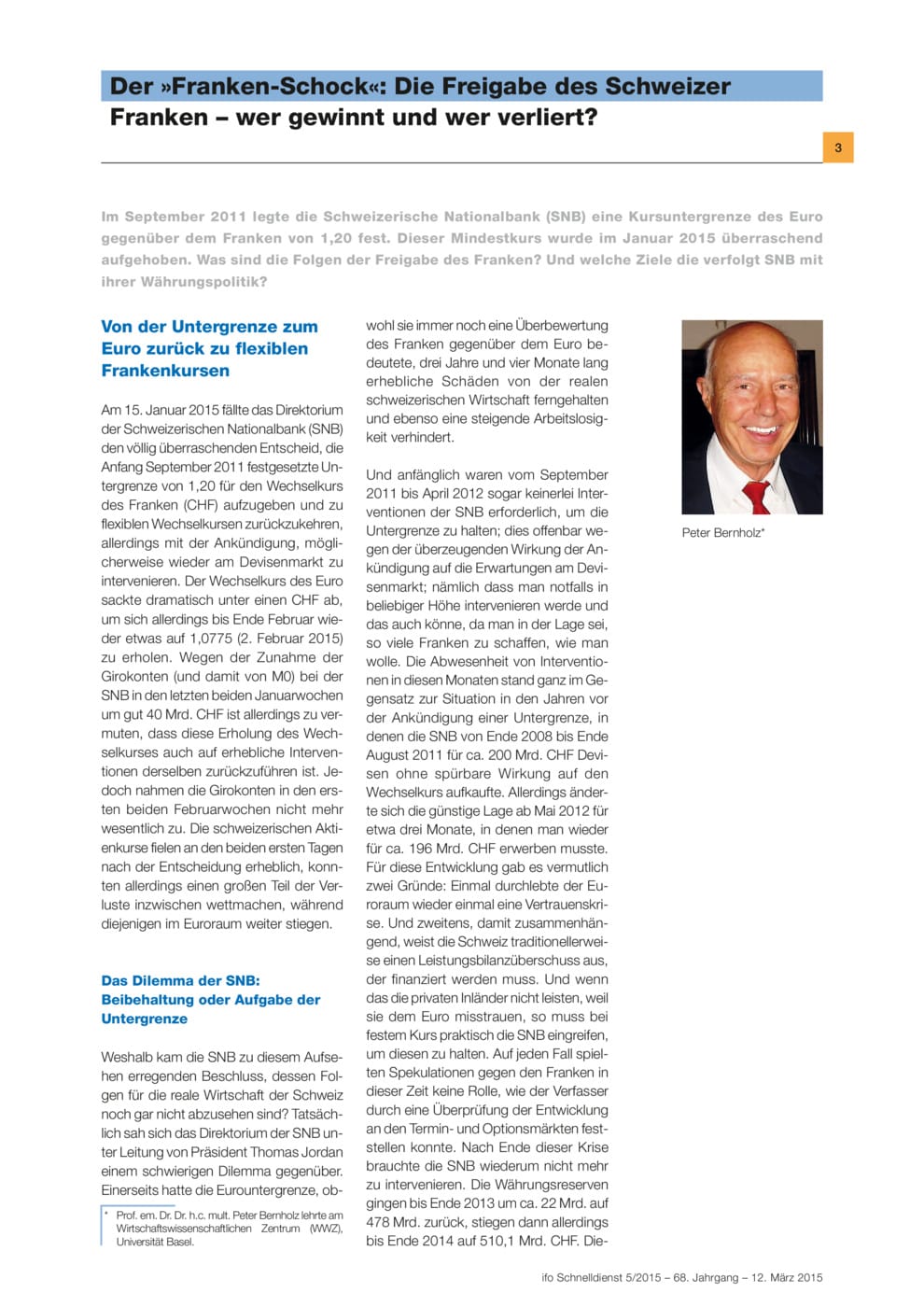The “Franc Shock”: a Floating Exchange Rate for the Swiss Franc – Winners and Losers
ifo Institut, München, 2015
ifo Schnelldienst, 2015, 68, Nr. 05, 03-19

In September 2011 the Swiss National Bank (SNB) set the lower exchange rate cap for the euro against the franc at 1.20. This exchange rate cap was surprisingly lifted in January 2015. According to Peter Bernholz, University of Basel, it is still too early to assess the implications of lifting the cap. Should the exchange rate remain around one Swiss Franc to a euro, this could have dramatic consequences for Switzerland’s real economy, making it worthwhile to discuss potential alternatives to the SNB’s current policy. For Ernst Baltensperger, University of Bern, lifting the SNB’s exchange rate cap was the right thing to do. The international environment has changed drastically since autumn 2011. Despite all remaining risks, a return to far more normal conditions has been seen globally, in which international capital flows are determined by yield spreads and economically comprehensible factors. Over the past three years, however, the Swiss National Bank’s exchange rate policy cap granted an adjustment period of three years and has given many companies time to adapt to the new conditions. David Iselin, ETH Zurich, sees the first signs of an upturn in demand for US dollars. Worldwide, however, few currencies are more attractive than the Swiss franc. By lifting the exchange rate cap at this point in time, the SNB is speculating that the Swiss franc is soon going to become less attractive. Why this should happen, however, remains a mystery to many. Oliver Landmann, University of Freiburg, berates the lack of a credible and transparent monetary strategy on the part of the SNB. No such strategy can be seen at the present time. This is an obligation that the SNB cannot shirk. In the opinion of Rudolf Minsch, economiesuisse, the appreciation of the Swiss franc is negative in the short-term, but positive in the long-term. The appreciation presents major challenges for Swiss companies and will accelerate structural change as a result. The strong franc will force Swiss companies to focus on innovation and high value-added activities.